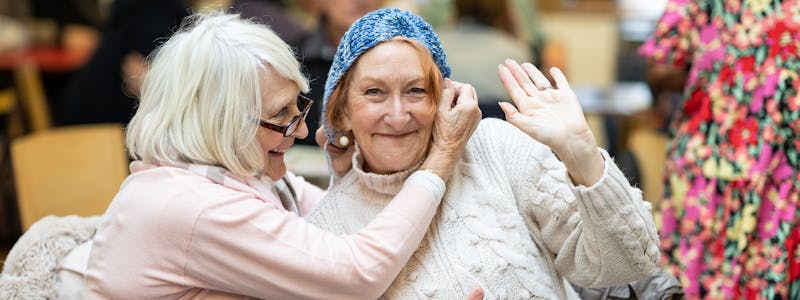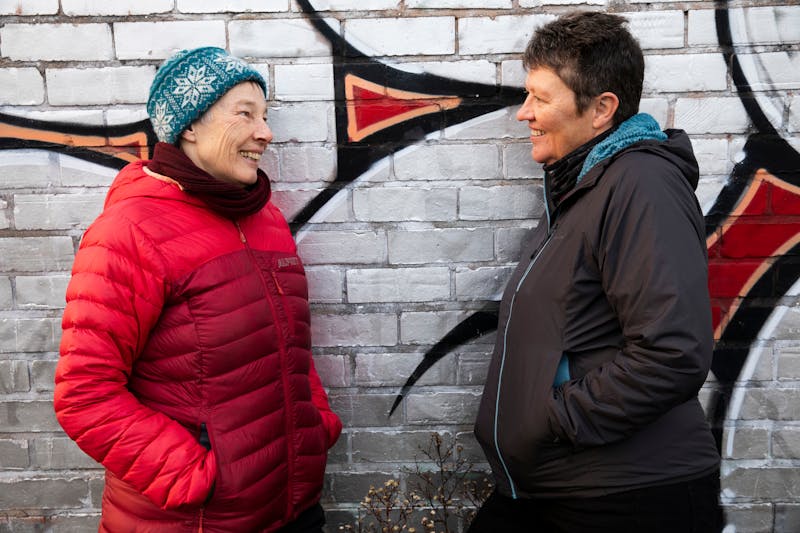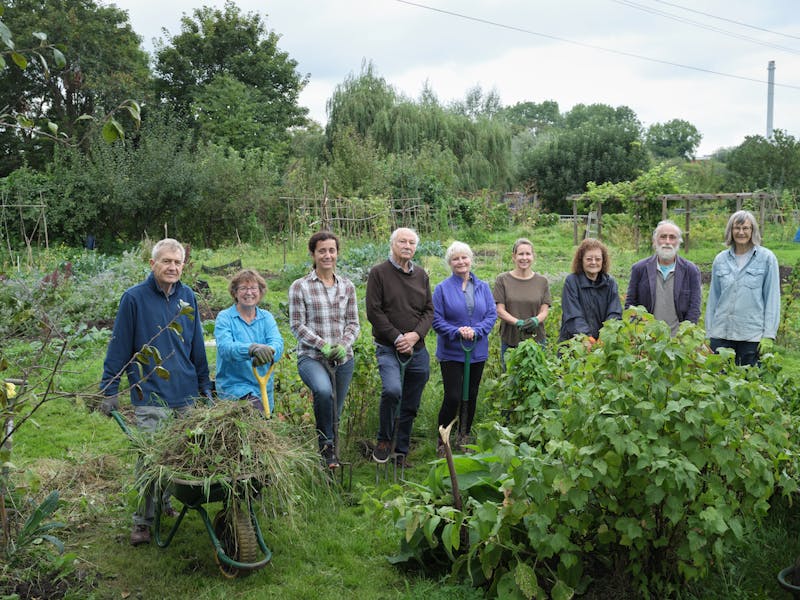Unleashing Wisdom! Challenging Ageist Stereotypes in Media

Frumpy, grumpy, frail, and technophobic? Sound familiar? These are just some of the ageist stereotypes that the older generation has to face, never mind those in the public eye in media and entertainment, on our red carpets, and our screens. The rhetoric is clear, from ageist ad campaigns for younger skin to the types of roles older actors are given- being and looking young is deemed desirable. But how do these negative stereotypes in media and TV feed into our societal assumptions about aging?
In an era dominated by youth-centric media and entertainment, we want to challenge ageist stereotypes to promote and foster a more inclusive society. A society that values the wisdom and contributions of all age groups and highlights successful examples and organizations because, after all, a more inclusive society is a whole lot more enjoyable to live in.
What is Ageist Stereotyping?
As we explore ageist stereotypes in media and entertainment, it is essential to recognize that stereotyping is a prevalent human tendency, whether we mean to do it or not.
The modern use of "stereotype" refers to an unjust and inaccurate belief or perception about all individuals or things possessing a specific characteristic. However, its original meaning was quite different. Much like the word "cliché," the concept of stereotypes can be traced back to a printing technique. The first modern use, however, of it as an “inaccurate belief” was found in Walter Lippmann's 1922 influential book, Public Opinion.
Interestingly, it was not until almost 40 years later that the term "ageism," referring to the "discrimination against people based on age," was coined by Dr. Robert N. Butler, a gerontologist and former director of the National Institute of Aging.
Ageism is most common for those over fifty, and it’s generally understood that the older a person is, the more negative stereotypes are placed upon them. Many studies have also found that female characters aged over 50+ in film and television are grossly underrepresented and stereotyped.
The 5 Most Common Ageist Stereotypes (and why they’re not true)
According to the WHO, half the world's population is ageist against the older generation, but what are some of the most common aging narratives that we feed into?
Older People Can’t Use Technology
Older people are technologically incompetent. This stereotype is perhaps one of the most common, assuming that older people can't adapt to new technologies or lack the knowledge to use them effectively. An assumption that completely ignores the fact that many older adults actively engage with digital devices and social media, reframing aging on TikTok and Instagram.
Older People Can’t be Independent
Older adults are frail and helpless, both on and off-screen. Portrayals of older individuals are clear in advertising and the majority of mainstream media - they are physically weak, vulnerable, and dependent. Just look at The Simson's character Abe Simpson; he is seen as dependent, stubborn, and useless. Self-deprecating jokes about "senior moments'' are also across the media board. Completely overlooking the truth that many adults over 50+ enjoy an active, happy, and independent life.
Older People are Slow
Older people are mentally incompetent. This stereotype assumes that cognitive decline is a natural part and parcel of aging. Leading to the belief that all older people are mentally incapable, slow, or stupid. It completely disregards that mental abilities can remain intact or even improve with age, and wisdom and life experience are a privilege.
Older People Aren’t Sexual
Ageist media often stereotypes older people as asexual, neglecting their romantic and sexual desires. Portraying them as non-sexual or comical reinforces societal discomfort around aging and intimacy. Challenging this stereotype promotes inclusive representations and recognizes that older adults can and do have fulfilling sex lives.
Older People are a Burden
Older people burden society. This stereotype views and stages older individuals as being a drain on resources, including healthcare, pensions, and social services. Utterly disregarding individuals' contributions to society through their wisdom, experience, volunteer work, and continued engagement in various fields. Just look at female entrepreneur Susan Feldman's In The Groove collective, where they keep women engaged, connected, and in the know.
Portrayal and Treatment of Older People in Film and TV
But, what about the portrayal of older people in film and T.V.? Well, this is where it becomes a little more sex-specific. While a lot of productions present nuanced and positive representations, like seven-series, show Grace and Frankie (we highly recommend you watch it), which frankly talks about age, ableism, and sex with authentic depictions of older Americans, older characters, in general, are often unrepresented, especially female.
According to a recent 2019 report by TENA, the Geena Davis Institute, and USC Viterbi called Frail, Frumpy, and Forgotten, in movies across Germany, France, the U.K., and the U.S., 74% of characters aged 50+ are male, while around 25% are female. So even if you see an older person, it's most likely a man. Furthermore, when female characters are on screen, they're 2.8 times more likely to be depicted as more feeble, senile, or frumpier than their male counterparts.
Changing the Narrative Around Aging in the Industry
In recent years, the rhetoric around aging has started to shift as efforts have been made to change preconceived narratives in the entertainment industry and mainstream media. Here are some ways people are working to shift representations and perceptions of aging.
More Diverse Storytelling
Filmmakers and TV producers are incorporating more diverse and authentic stories about aging. We already know that celebrating older people without stereotypes is possible, as written and represented in Roahl Dahl's Charlie and the Chocolate Factory when Charlie's grandad inspires Charlie with his passion for life. At the same time, the Centre for Ageing Better's Age-Positive Image Library contains hundreds of realistic and positive images of those over 50 and above.
Increased Representation
There is a growing recognition of the need for more meaningful roles and representation of older actors beyond the stereotypical castings. Like the 2022 film Good Luck to You, where the female character Nancy Stokes (played by actress Emma Thompson) explores her sexuality with a younger man, confronting negative labels while unapologetically embracing beauty at any age. Those looking for love in reality TV dating shows, ABC has just announced its Golden Bachelor.
Positive Aging Campaigns
Various organizations and initiatives promote positive aging in the industry. They aim to shift perceptions by highlighting older actors' and creators' value and potential. Dove #KeepTheGrey campaign, in particular, was released just after age-based discrimination was announced over Lisa LaFlamme's choice to stop dyeing her hair.
Fight for Change! Who is Promoting Images of Aging in Media?
Despite the negativity, many companies, charities, and organizations are shifting the narrative around aging in media and entertainment. Particularly the stigma, outdated assumptions, and often offensive slurs- to fully embrace and welcome the golden years by showing accurate and authentic representations.
1. AARP
AARP is a US-based nonprofit empowering Americans over 50 to self-determine how they want to live as they age. They advocate for more than 100 million Americans with health security, financial literacy, and support groups. They are passionate about combating ageist stereotypes in all underrepresented areas.
2. Decade of Healthy Aging
As people live longer, the UN Decade of Healthy Ageing Program wants to see humanity thrive, not merely survive. They believe (as do we) people worldwide deserve good health and well-being later in life, regardless of where they live. They have tons of initiatives and topics to explore, like digital equity, age-friendly environments, and social isolation and loneliness.
https://www.decadeofhealthyageing.org/
3. Influencers
Social media isn't just for teenagers; many older people worldwide show that they have just as much of a right to be there as younger folk. Check out Accidental Icon, run by fashion icon Lyn Slater, who talks about life changes, fashion, and discovering new things about yourself at any age. The Very Cool Grandpa who has over 6 million cool grandchildren, and the Grandpa Chan duo who set up their channel to connect with their real grandkids.
4. Acting Your Age Podcast
Whether in your thirties, forties, or beyond, the Acting Your Age podcast by actress Nicky Clark challenges the narrative of aging being a failure. Each episode invites a new guest, where they talk about ageism myths, stereotypes, and what getting older means to them. Alongside this, Nicky also runs the Act Your Age Campaign, highlighting the invisibility of middle aged female actors in TV and film.
http://www.mrsnickyclark.com/-acting-your-age--campaign.html
5. Critical Media Project
The CMP is a free media literacy web database for educators and students between the ages of 8 and 21. Their database of materials is dedicated to educating young people on media representations of age, disability, sex, ethnicity, and race. Encouraging them to challenge these stereotypes, create their own representations, and become active users of change within their communities.
https://criticalmediaproject.org/
6. Ageist
This media company is breaking all of society's ageist stereotypes with its work. They advise companies on celebrating and championing the over 50s without feeding into ageist rhetoric while giving the modern 50+ demographic the content they deserve.
Resources
- Hill, A. (2023, May 18) Older people using TikTok to defy ageist stereotypes, research finds. The Guardian https://www.theguardian.com/technology/2022/may/18/older-people-using-tiktok-to-defy-ageist-stereotypes-research-finds
- USC Annenberg. (2019, September 13) USC Annenberg-Humana studies suggest relationship between TV age bias and health of seniors. USC News.
https://news.usc.edu/127799/usc-annenberg-humana-studies-suggest-relationship-between-tv-age-bias-and-health-of-seniors/#:~:text=Seniors%20who%20experience%20ageism%20through,language%20and%20underrepresentation%20of%20seniors. - Ramon, A. (2022, May 5) 10 great films about old age. BFI.
https://www.bfi.org.uk/lists/10-great-films-about-old-age - Geena Davis Institute on Gender in Media Report
https://seejane.org/research-informs-empowers/the-ageless-test/ - Centre for Ageing Better - For the images in this article
https://ageing-better.org.uk/news/age-positive-image-library-launched
About the Author

Sarah Perowne
Sarah Perowne is a language and education specialist with over 10 years of experience in teaching and content creation. She has worked with students of all ages in various teaching methods, including those with disabilities and ASD. She sports an acute knowledge and skillset in teaching English as a second/foreign language (ESL) English Language Arts and creating content for online teaching resources, articles, and podcasts.
Recent Clues
- Guardian spirit moaned terribly Crossword Clue
- Swiss peaks Crossword Clue
- School is underlying place for rebellion Crossword Clue
- Appreciative feeling (9) Crossword Clue
- Escape, dodge (5) Crossword Clue
- Mound of drifted sand (4) Crossword Clue
- Come before Crossword Clue
- Birthplace of author Isabel Allende Crossword Clue
- So-so poker hand Crossword Clue
- 1940 conflict Crossword Clue
- Fastened (a shoe) (7) Crossword Clue
- Event cited in an insurance policy Crossword Clue
- Signal fire Crossword Clue
- Hesitant response Crossword Clue
- Titled women Crossword Clue
- ___ B (alternative strategy) Crossword Clue
- Mil. morale booster Crossword Clue
- Taxi returned to Italian explorer Crossword Clue
- Upright Crossword Clue
- Boring do: suite horrible Crossword Clue
- Labrador or dachshund, for one Crossword Clue
- Grassy lawn patch Crossword Clue
- By way of, in a travel itinerary Crossword Clue
- Voting group Crossword Clue
- Doomed from the get-go, for short Crossword Clue
- Groupie heard to follow turkey? It's a joke (3,6) Crossword Clue
- Green light Crossword Clue
- "Disco" dude from "The Simpsons" Crossword Clue
- Offensive odor Crossword Clue
- Perfect Crossword Clue
- Monotonous Crossword Clue
- Info Crossword Clue
- Rats quietly landed on board Crossword Clue
- Musial of baseball Crossword Clue
- Company left in depression Crossword Clue
- "How obvious!" Crossword Clue
- 1899 conflict Crossword Clue
- Set apart (7) Crossword Clue
- Kilns for hops Crossword Clue
- Support of chain's not broken Crossword Clue
- Sir's counterpart Crossword Clue
- Able to move one's limbs in harmony Crossword Clue
- Incitement maybe to steal coffee airline served up Crossword Clue
- Stunning 17,000-year-old discovery in France's Lascaux Cave Crossword Clue
- Nato's T Crossword Clue
- Fed data Crossword Clue
- Bird in the nest (3) Crossword Clue
- Grouchy Muppet Crossword Clue
- Awareness of unusual things one wears Crossword Clue
- Prefix with "center" Crossword Clue
Trending Clues
- Adriatic seaport - toast (8) Crossword Clue
- Overseas agreement? Crossword Clue
- New Zealand native Crossword Clue
- Get along Crossword Clue
- Franklin's belief Crossword Clue
- Jam Crossword Clue
- Whacked Crossword Clue
- Religious defector Crossword Clue
- "Twin Peaks: - Walk With Me" Crossword Clue
- Style creator Crossword Clue
- Voided Crossword Clue
- Fly-catching bird Crossword Clue
- Places of great interest Crossword Clue
- Web designer? Crossword Clue
- Improve morally Crossword Clue
- Arcing baseball hits Crossword Clue
- Personification of good fortune (4,4) Crossword Clue
- Punished pecuniarily Crossword Clue
- Tropical illness Crossword Clue
- Juncture Crossword Clue
- Agitates Crossword Clue
- Sudden attack Crossword Clue
- Doubtful Crossword Clue
- Outer layer of a tent Crossword Clue
- West Asian river Crossword Clue
- -- gum (thickener) Crossword Clue
- Shape-changing Crossword Clue
- Schedule Crossword Clue
- Singer Alessia Crossword Clue
- Black Crossword Clue
- Brand of cooler Crossword Clue
- Circumvent Crossword Clue
- Close-fitting trousers Crossword Clue
- Type of cell Crossword Clue
- Modern greenhorn Crossword Clue
- The new oil, it's said Crossword Clue
- One working 40-hour weeks Crossword Clue
- As such (2 wds.) Crossword Clue
- Synagogue singer Crossword Clue
- Trite, hackneyed Crossword Clue
- The Creator, in Hinduism Crossword Clue
- "The - of the August Moon" Crossword Clue
- Dispensary option Crossword Clue
- Drama's story Crossword Clue
- Boot camp affirmative Crossword Clue
- Formally withdraw Crossword Clue
- Undeceive Crossword Clue
- Swiss river Crossword Clue
- Fire-starting rock Crossword Clue
- Reduce to fine particles Crossword Clue


